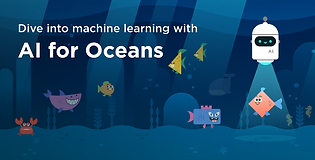CODING AT TPA
The impact of computer coding on modern life is so universal that many of us don't think twice about it! But behind every social media post, streaming service selection, and smartphone app is, of course, code: a system of functions, commands, and rules written in a particular language to make our digital technologies function smoothly. Even with the rise of artificial intelligence and its increasing power to help write and edit computer code, human coders are essential to the process. And computational thinking is valuable for everyone!
For many students, learning basic coding can be an empowering experience that teaches a wide range of skills: creativity, problem-solving, perseverance, confidence, and more. Teaching coding to our students helps them to better understand how the modern world works, and perhaps, someday, shape the digital future.
What is coding?
Coding is the process of writing out steps for a computer to follow to achieve a goal or perform a task. Typically, coding is done using a programming or scripting language—like HTML, Python, or JavaScript—which the coder uses to translate his or her ideas into words, phrases, and syntax that the computer understands. These instructions are also called "commands."
Computer programming is the larger process: It involves identifying a problem or challenge, considering potential solutions, writing code that can enact those solutions, and then testing and revising the code to achieve the desired results.




Why teach coding?
Coding isn't just for "techies" or kids who want to work on computers. There are lots of compelling reasons for all students to learn to code:
- It might be required: Increasingly, some form of computer science standards are being added in states across the country, so you may find that it becomes a necessary part of the curriculum.
- Creativity and representation: It teaches students how to be digital creators—to create their own websites, apps, and features. Coding allows students to wield the full power of the internet—and multimedia—to share their ideas, talents, and creativity. Plus, encouraging all kids to learn coding expands the representation of those making the fundamental programs that control so much of the world.
- Valuable thinking skills: Learning to code provides students with skills that apply across content areas. By learning to tell machines what to do, students engage in problem-solving and computational thinking, which apply to academic and professional disciplines across the board. As computer scientist Mitch Resnick from MIT explains, "Most people won't grow up to become professional computer scientists or programmers, but those skills of thinking creatively, reasoning systematically, working collaboratively … are things that people can use no matter what they're doing in their work lives."
- Deeper understanding of technology: It teaches students the concrete specifics of how everyday technologies work. Students get a better understanding of what apps are actually coded to do and, in turn, what some of the larger consequences of using them are.
- Opportunities: Technological knowledge is valuable and applies to all sorts of careers, so understanding some of the basics opens up more opportunities for kids.
- It's fun! Coding can provide students with a creative outlet, and it will give them a leg up when they begin pursuing a career and other professional goals.
Is coding relevant across subjects and curricula?
Yes!
Because learning to code involves logic, problem-solving, backwards planning, and other broadly applicable thinking skills, teachers of all subject areas can consider making coding a part of their content area. In fact, students can use coding projects to demonstrate knowledge in any subject.
Coding projects are also great opportunities for cross-disciplinary, project-based learning.


